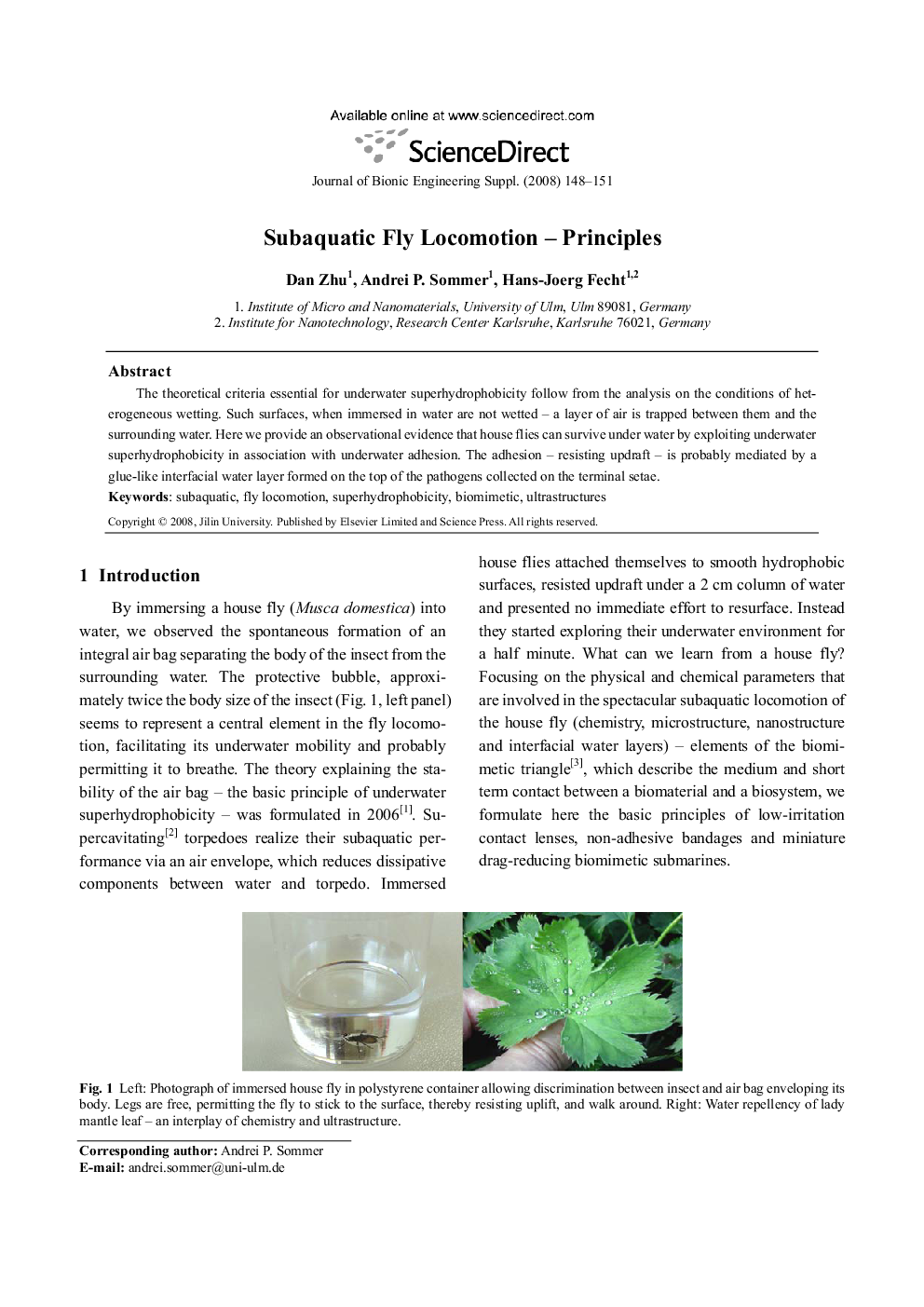| Article ID | Journal | Published Year | Pages | File Type |
|---|---|---|---|---|
| 827111 | Journal of Bionic Engineering | 2008 | 4 Pages |
Abstract
The theoretical criteria essential for underwater superhydrophobicity follow from the analysis on the conditions of heterogeneous wetting. Such surfaces, when immersed in water are not wetted — a layer of air is trapped between them and the surrounding water. Here we provide an observational evidence that house flies can survive under water by exploiting underwater superhydrophobicity in association with underwater adhesion. The adhesion — resisting updraft — is probably mediated by a glue-like interfacial water layer formed on the top of the pathogens collected on the terminal setae.
Related Topics
Physical Sciences and Engineering
Engineering
Biomedical Engineering
